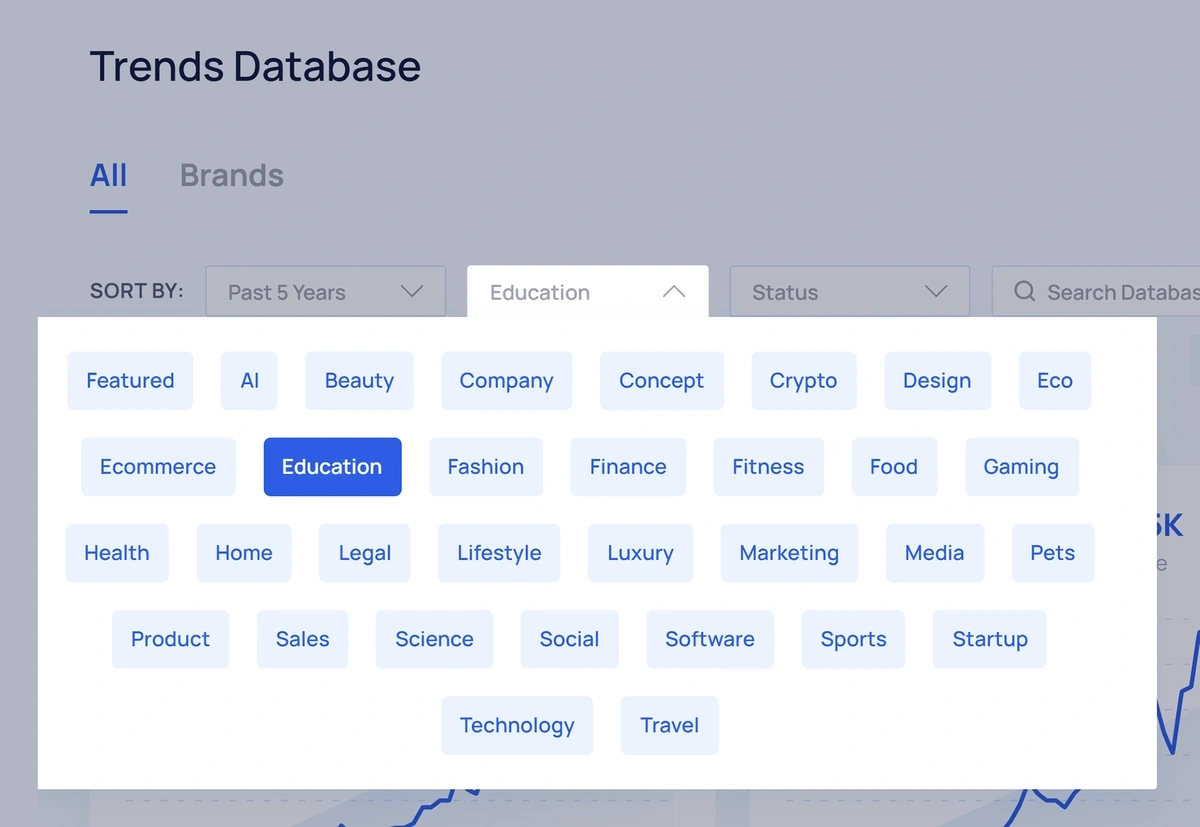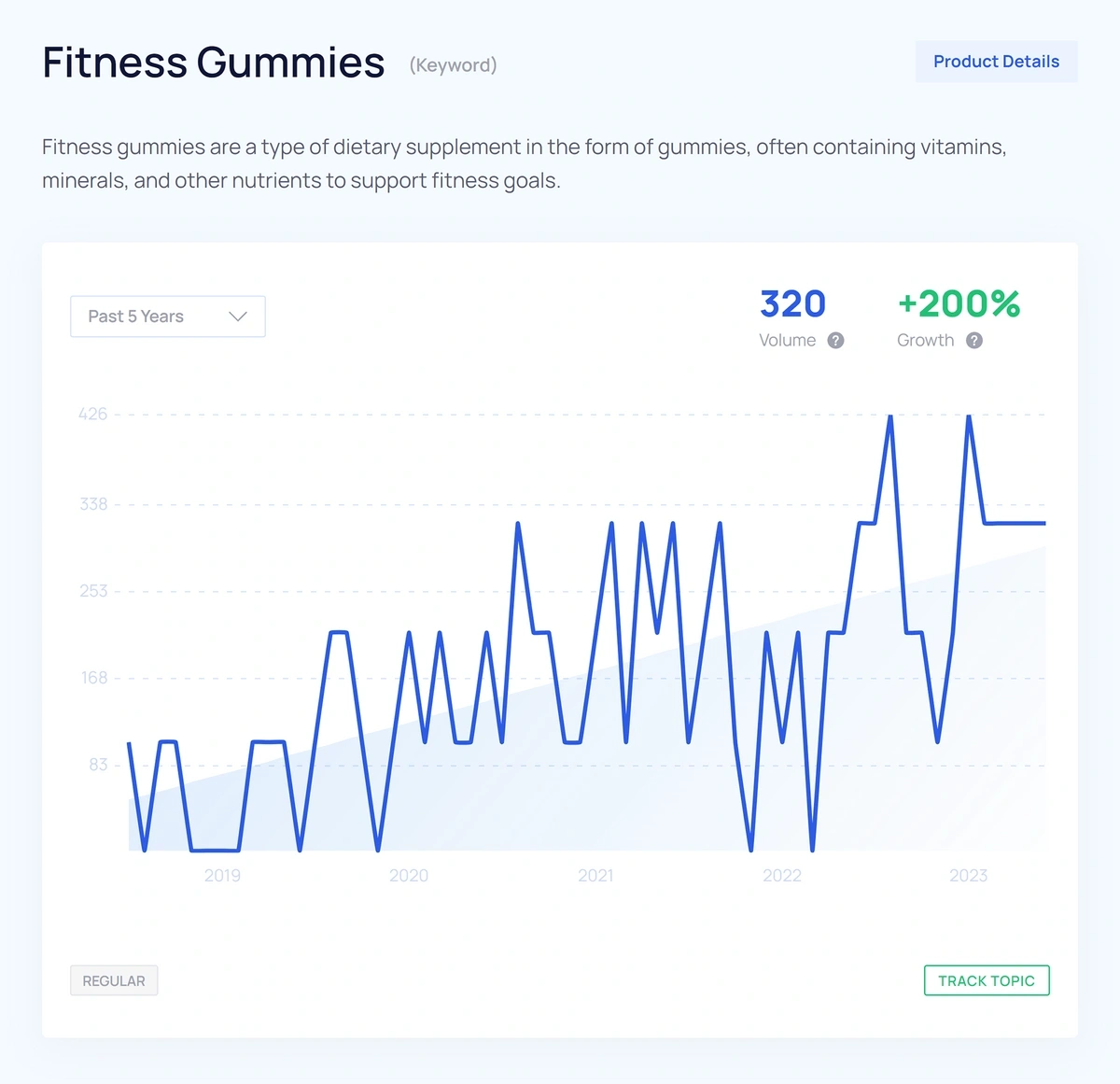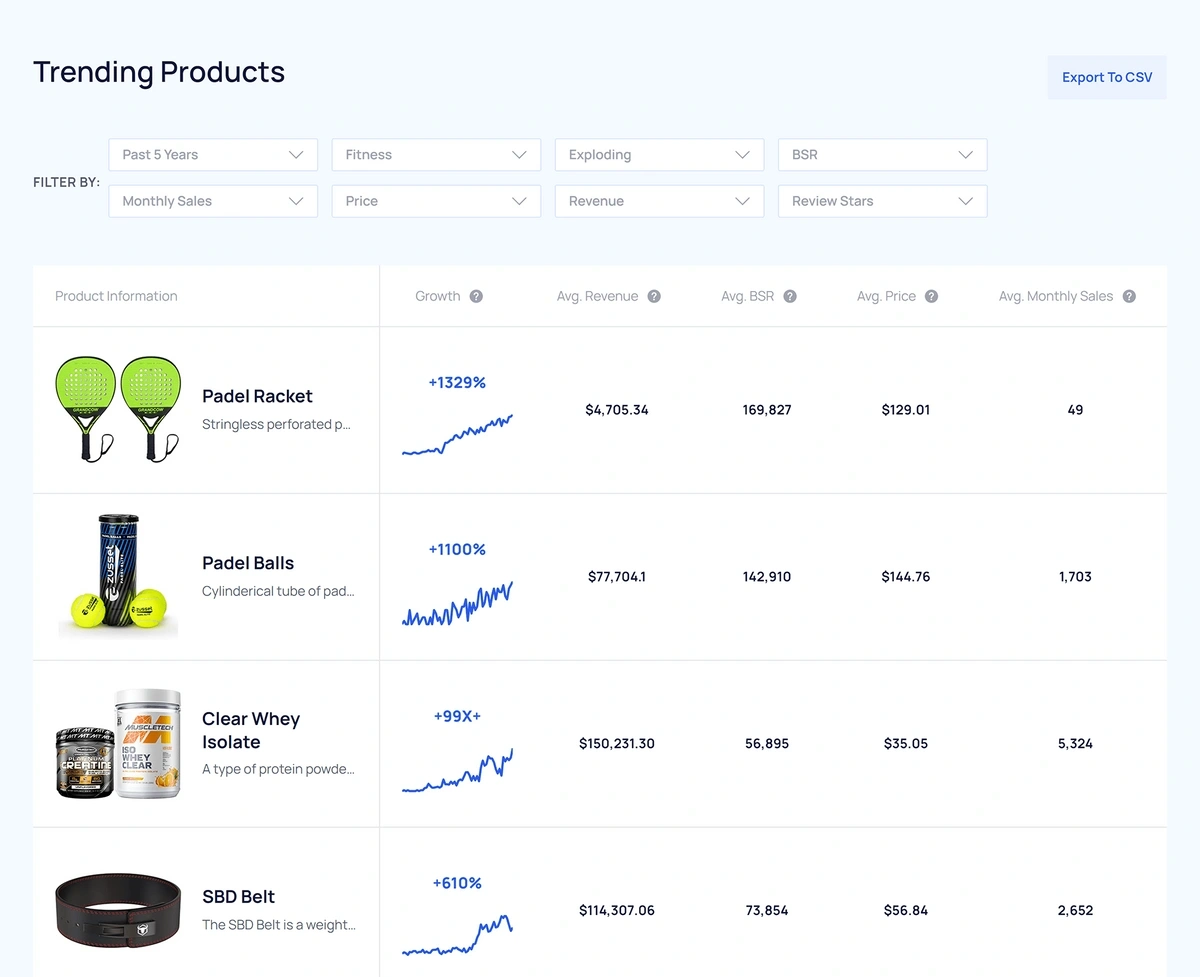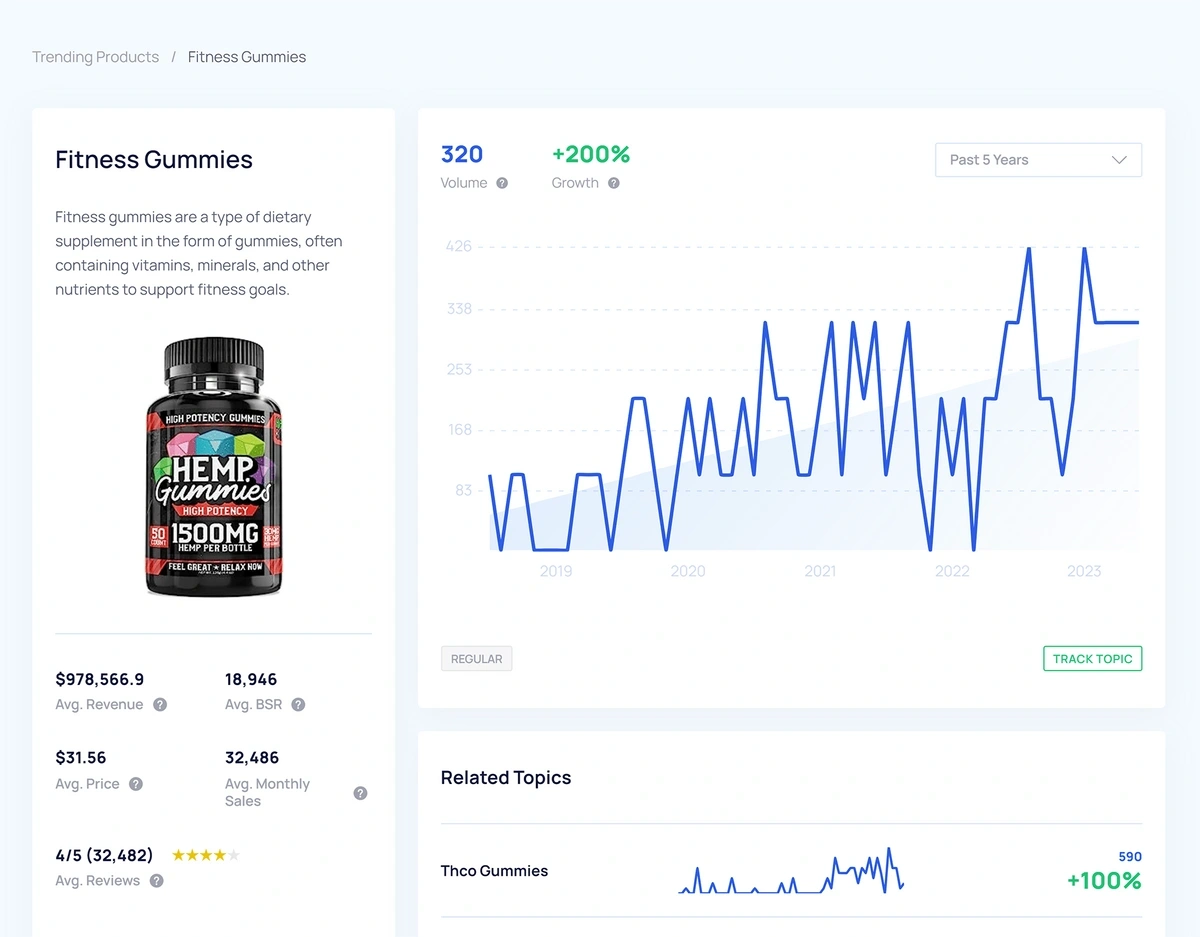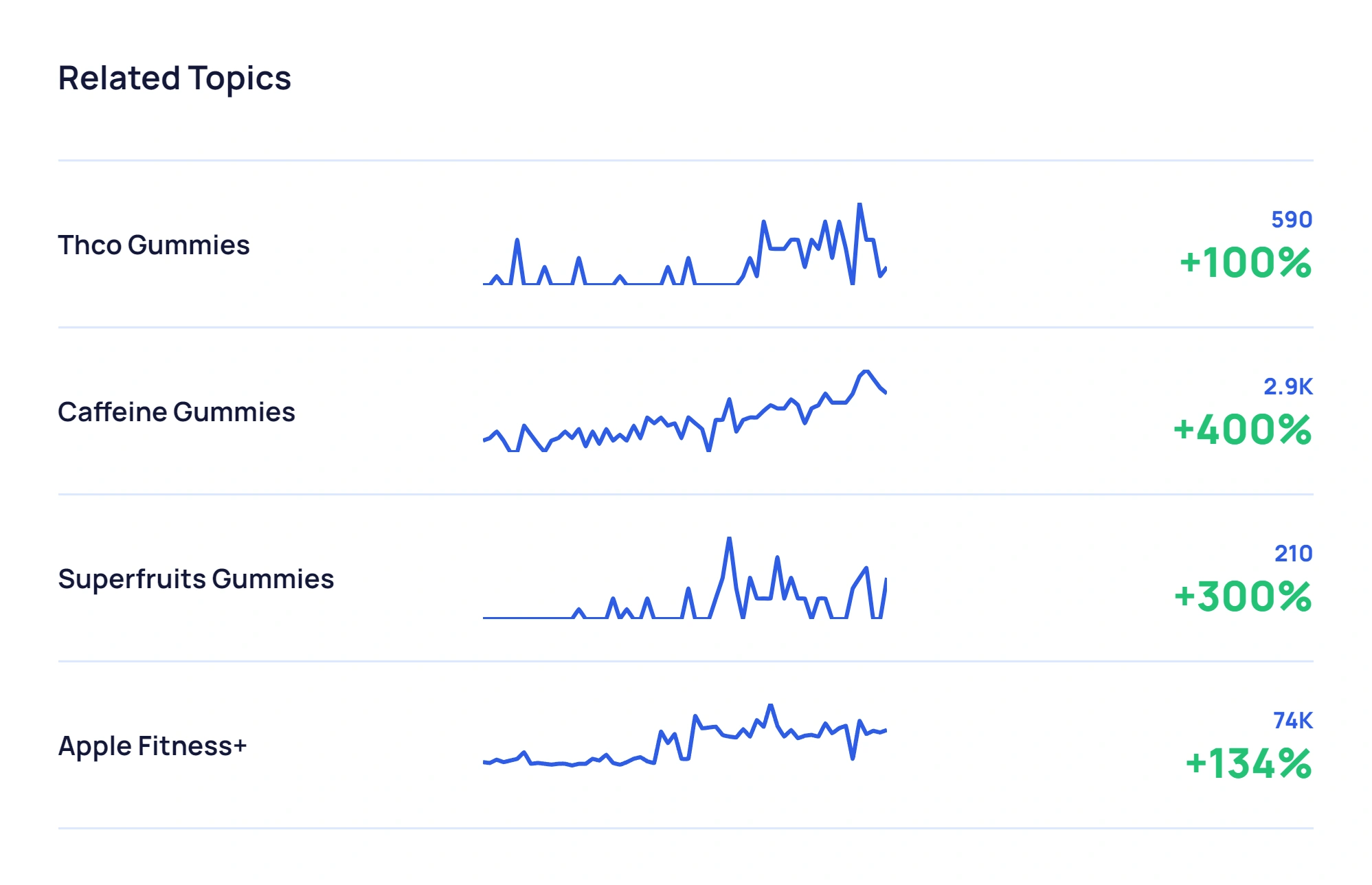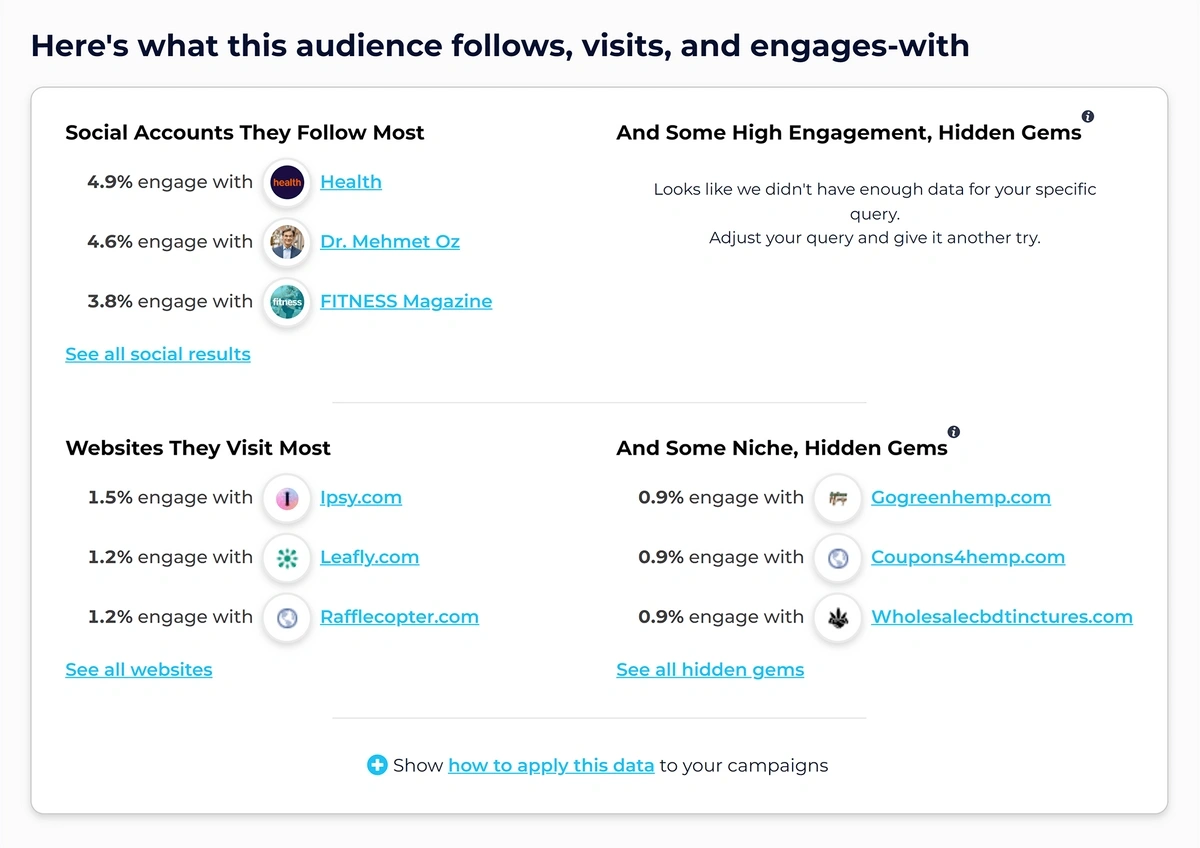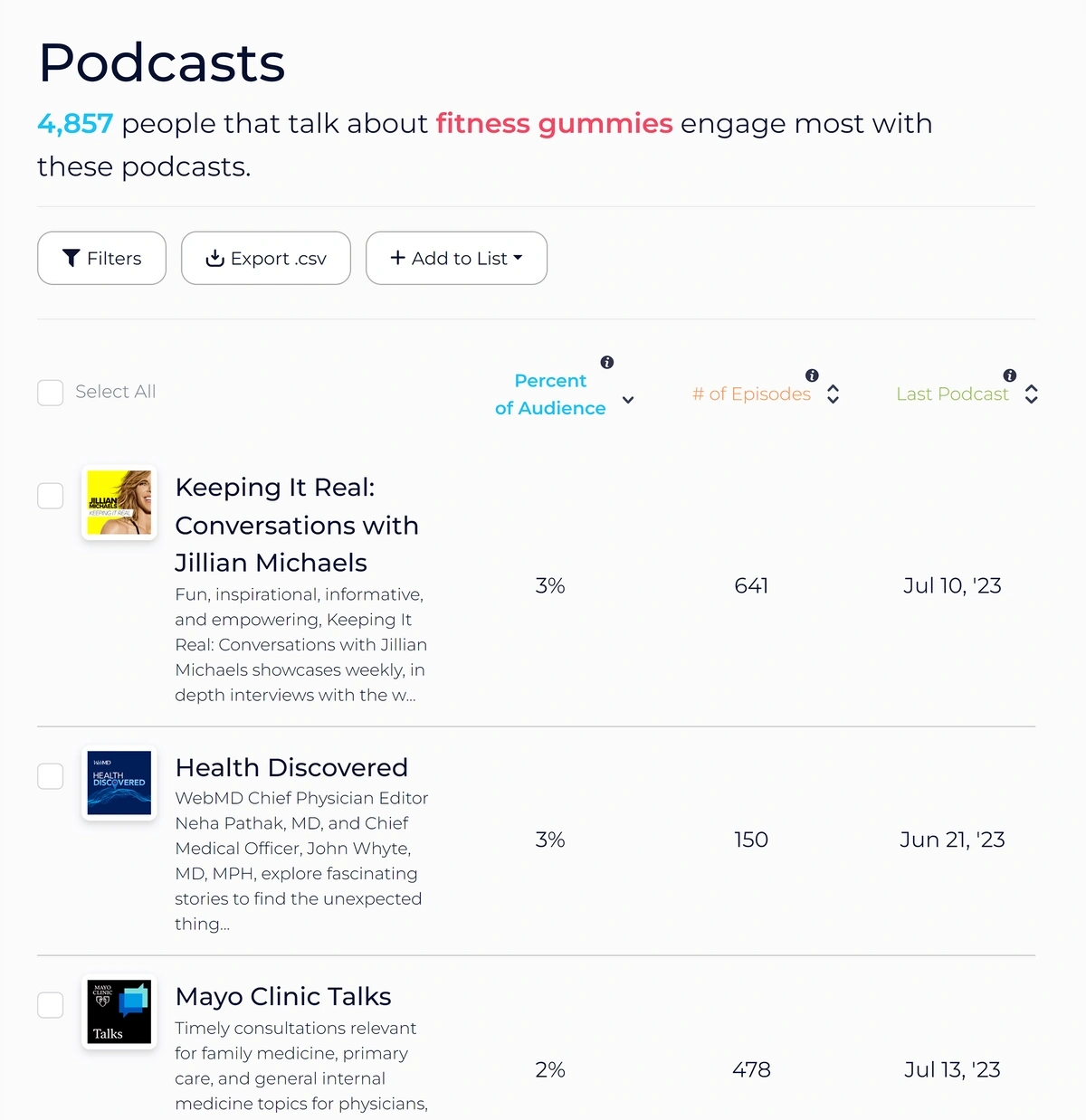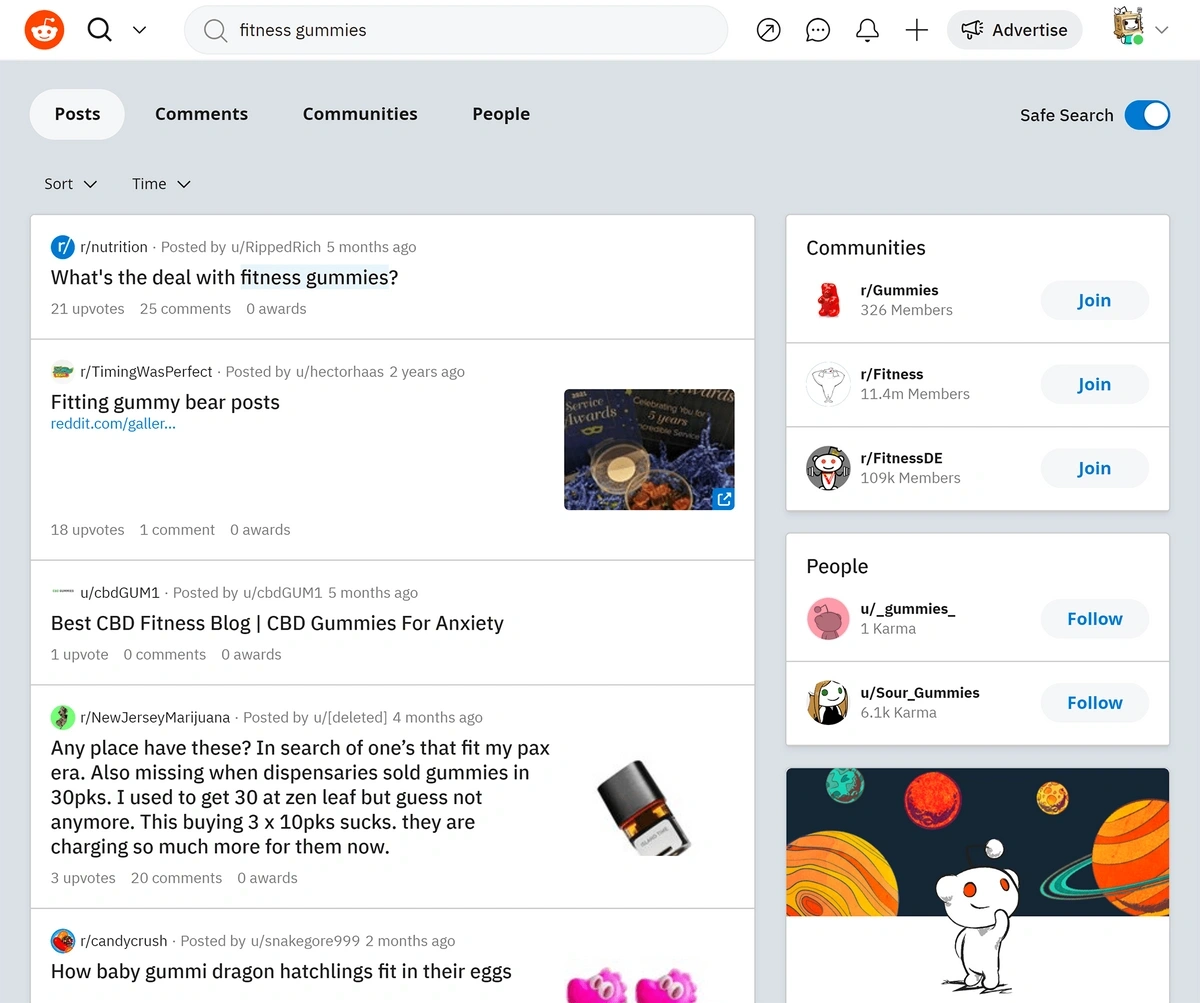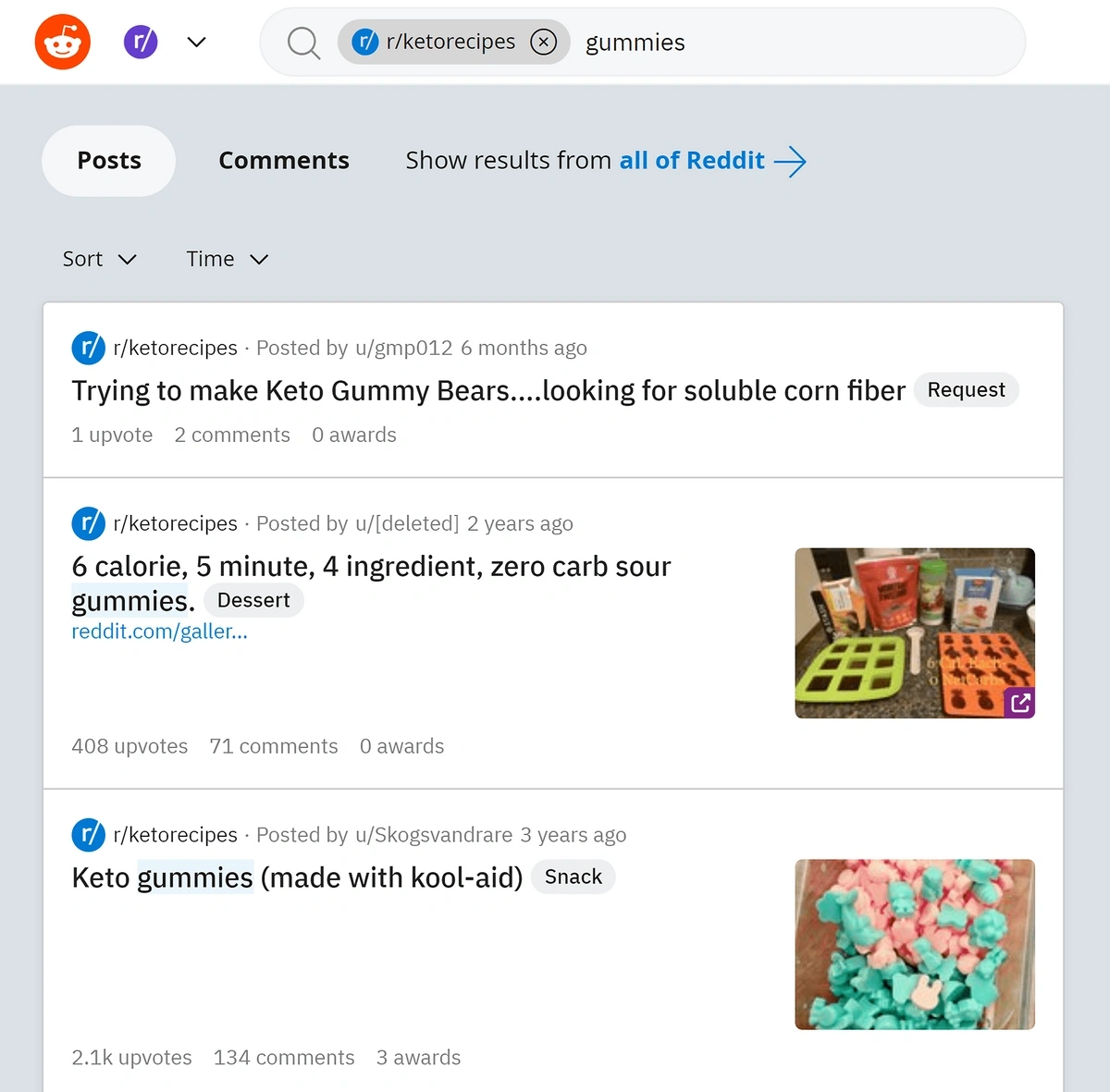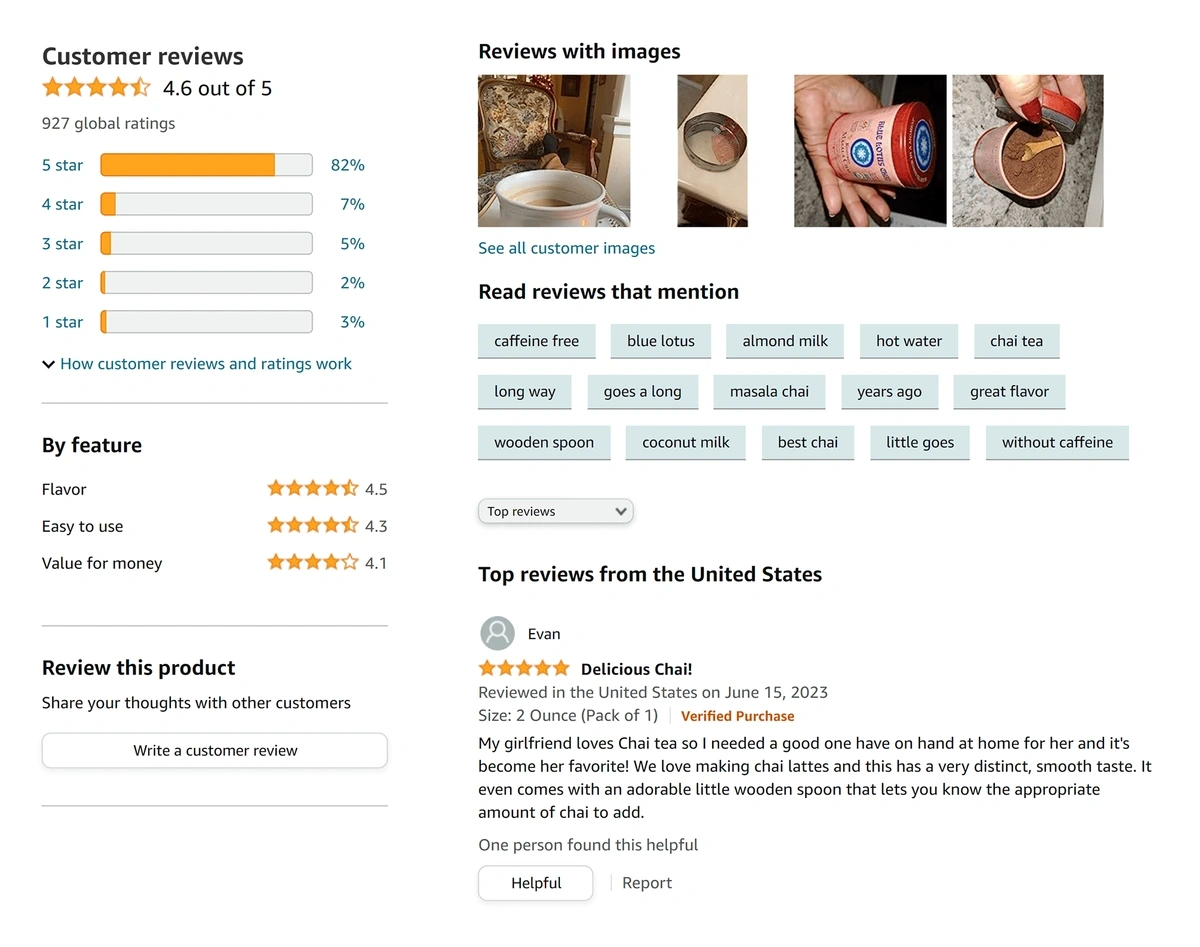
Product Trend Analysis: Step-By-Step Guide
Finding new trending product ideas is pretty easy.
The hard part is identifying profitable products with long-term growth potential.
Even once you’ve narrowed it down to a few different ideas, how do you select just one?
To help you select the right product for your business, here’s a step-by-step guide to product trend analysis.
What is Product Trend Analysis?
Product trend analysis refers to the process of examining and identifying customer interest and demand patterns of a product or a group of products over a given period. This analysis involves looking at historical and current data to predict future trends, discern seasonal fluctuations, and understand consumer behavior and preferences shifts.
This is a critical piece of business intelligence for ecommerce businesses since it helps with business decision-making, product manufacturing and sourcing, and understanding market conditions and sales trends.
For example, if you’re about to launch a new skincare product, you can use product trend analysis to assess the current beauty trends (e.g., vegan skincare, organic skincare, sustainable skincare, etc.), track which brands are showing the fastest growth, and then create a competing product that aligns with the strongest growth trends.
How to Conduct Product Trend Analysis
Here's our step-by-step process for conducting product trend analysis to accurately evaluate any product's growth potential and risk.
Step 1: Identify Emerging Product Trends
Many ecommerce brands use a manual process to find and understand product trends. For example, you might:
- Read niche-specific publications
- Follow influential figures in their industry on social media
- Review freely accessible market trend reports, like those available from GlobeNewswire or Allied Market Research
However, this approach can be quite labor-intensive, and there's always the risk of overlooking the next emerging trend. After all, the nature of an emerging trend suggests it isn't yet easily noticeable or widely discussed.
To make it easier for investors and business executives to spot under-the-radar trends, we developed Exploding Topics. It reliably pinpoints developing trends before they hit the mainstream.
So instead of spending hours manually searching for emerging trends, you can create a list of under-the-radar industry trends in minutes by exploring the Exploding Topics Trends Database.
This database is a curated collection of 14,000 data-backed that our team has manually reviewed.
You can sort results by category (e.g., finance, fitness, luxury, ecommerce, education, etc.) and set the trend filter to "exploding" to view only the trends that are currently taking off.
For example, if you're a DTC fitness brand selling Keto meal delivery kits and want to find other ancillary products to bundle with your core meal kits, you can sort the Trends Database to find parallel trending products. For example, you'll see that fitness gummies are a trending topic that might be a good fit for your target audience.
You'll also notice that Exploding Topics provides similar related topics like "protein gummies,” which you can also add to your list of potential products. Not sure how to save a topic? Just click “Track Topic” and you can save it to a Project, which lives inside your dashboard.
Search The Trending Products Database
While the Trends Database is excellent for identifying trending topics – some of which are products – the Trending Products database is dedicated exclusively to trending products and provides more detailed information like revenue, demand, and other key metrics.
For example, we already identified “fitness gummies” as a trending topic in the Trends Database, but the Trending Products database gives us more information on how viable this product could be for your business, including:
- Traffic trends – You can gauge demand by looking at the search volume trend for this product or product category on Google Trends and Amazon. As you’re researching a product, note both how much traffic it currently receives as well as the historical trend, as that will give you deeper insight into the trend’s long-term growth potential and stability.
- Revenue – This metric gives you an estimation of how much money brands are making selling this product.
- Competition – This will help you gauge saturation and gauge how difficult it will be to break into the current market. This also gives you an estimation of how aggressively you’ll have to invest in marketing campaigns.
- Average Amazon ranking – Finally, it is helpful to see the Average Amazon Ranking for products in this category.
Digging more into our Trending Products database for this particular product category, you can see the average revenue is just short of $1M, average monthly sales of around 32,000 products, and a bottle is selling for around $31.
You can also see that the average brand selling fitness gummies has a 4 star review.
If you scroll down, you’ll see that some additional topics customers are interested in include:
- Thco gummies
- Caffeine gummies
- Superfruits gummies
- Apple Fitness+
Given that you are a keto brand and most of these customers are also searching for protein supplements and products, there is likely some potential in these products.
Step 2: Conduct Secondary Research
Now that you found a potential product winner, it is time to validate that it is actually a viable trend worth targeting.
At this point, you're looking for data to answer questions like:
- Can this be manufactured at a reasonable cost?
- Is there enough demand to hit your sales goals?
- How competitive is the market?
Audience Research
Understanding your audience's needs, preferences, and behaviors can help you identify pain points in the market and create a better product.
One of our favorite tools for audience research is SparkToro.
You can do a quick search for fitness gummies and get a high-level overview of the social media accounts and websites the target audience frequently visits.
You can also search for popular YouTube, podcast, and TikTok creators in the niche. This information is valuable for keeping up-to-date with your audience’s conversations and you might even want to partner with these influencers for future marketing campaigns.
Social Listening
Monitoring social media can be a treasure trove of insights to better understand pain points with existing products and gauge general customer sentiment.
Reddit is great for this because it is pseudo-anonymous, and people tend to be more honest.
If you are unsure where to start, type in a broad keyword your target audience might be interested in. For example, I typed in "gummies," and you can see that one of the subreddits that comes up is r/ketorecipes. Given that we're selling a keto meal delivery product, this is a great conversation to follow.
As you analyze conversations in specific subreddits, here are some specific things to pay attention to:
- Look for top, hot, or controversial posts about your topic.
- See the number of interactions and comments about your topic in each post.
- Understand thread/post frequency about your topic.
- Read through any posts or comments from moderators in the thread about your topic.
- See if this topic came up in any Ask-Me-Anythings (AMAs).
Mine Product Reviews On Amazon
Competitor reviews are a goldmine of information on customer pain points, desires, and general sentiment.
Here are some things to look for:
- Star ratings – Look at the overall star rating of a product. A high average rating generally indicates a well-accepted product, whereas a lower rating could point to issues.
- Volume of reviews –The number of reviews can hint at the popularity of a product. A high number of reviews often suggests a high volume of sales.
- Review recency – Recent reviews help you understand current customer sentiment and satisfaction, which can be particularly important if the product or its features have changed over time.
- Review sentiment – Analyzing the text, images, and videos of reviews can offer a wealth of information. Look for common praises or complaints, and take note of any specific features or aspects of the product that are frequently mentioned.
- Review trends – Look for trends in reviews over time. For example, if a product’s reviews have been deteriorating, it might indicate a decrease in product quality or an issue that needs to be addressed.
- Product questions – The "Customer Questions & Answers" section can give insights into what potential customers are curious or uncertain about, helping you identify features or information that might be important to emphasize in your own product listings.
These are three of the top secondary methods to dive deeper into the validity of your product. However, you may want to consider additional tactics like SEO keyword research and thorough competitor analysis.
Step 3: Collect Primary Data
Ultimately, secondary research will only get you so far. The best product validation will come from primary data sources like interviewing current customers and conducting market research surveys.
Market Research Surveys
Conducting customer or market research surveys can provide valuable insights into the potential viability of a new product.
Here are some specific things to ask and/or analyze in your survey:
- Collect demographic information – Gather basic information like age, gender, location, and occupation to better tailor your marketing messaging and learn more about where they hang out online.
- Understand customers' needs and preferences – Include questions like the pros and cons of the product(s) they're currently using to solve their problem and what they like or dislike about their current solution.
- Ask about product features – This can help you prioritize what to focus on in product development and marketing.
- Gauge purchase intent and potential price sensitivity – Include questions to understand what your customers are willing to pay for your product and the likelihood of purchasing the product if available today. This can help you estimate potential demand.
- Ask about product discovery – How did they find the solution they currently use? This can help you strategize your marketing and distribution.
Be sure to also include some open-ended questions as this can help you capture insights you may not have thought to ask.
Customer Interviews
Conducting one-on-one customer interviews is the most time-consuming and least scalable, but it often produces the deepest qualitative insights.
However, there's a learning curve in interviewing customers, and the quality of insights you gather will depend on your skills as an interviewer. Fortunately, there are some actionable books you can read to help guide you through this process, like Deploy Empathy: A Practical Guide to Interviewing Customers.
The goal of these interviews is to ask open-ended and follow-up questions to understand how a customer thinks about your brand and uses your products. You'll also want to dive deeper into how they discovered your product and the pain point it solves. All of this can be gold for both product development and future marketing efforts.
Remember, the goal of these interviews isn't to confirm what you already believe but to understand the customer's perspective.
Start The Product Trend Analysis Process Today
Companies that can consistently recognize the next big trends before they explode have a significant advantage in the market. On the flip side, selecting the wrong trend to chase can ruin your company.
The difference between the companies that consistently and successfully recognize the best under-the-radar trends and those that don’t is a solid product trend analysis process.
Stop Guessing, Start Growing 🚀
Use real-time topic data to create content that resonates and brings results.
Exploding Topics is owned by Semrush. Our mission is to provide accurate data and expert insights on emerging trends. Unless otherwise noted, this page’s content was written by either an employee or a paid contractor of Semrush Inc.
Share
Newsletter Signup
By clicking “Subscribe” you agree to Semrush Privacy Policy and consent to Semrush using your contact data for newsletter purposes
Written By


Josh is the Co-Founder and CTO of Exploding Topics. Josh has led Exploding Topics product development from the first line of co... Read more


